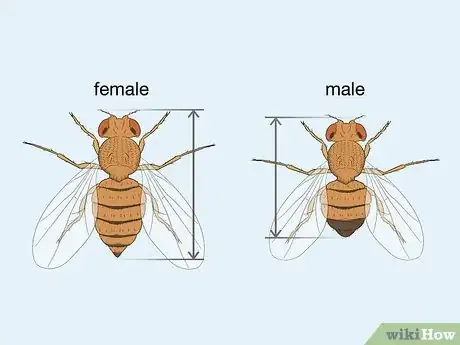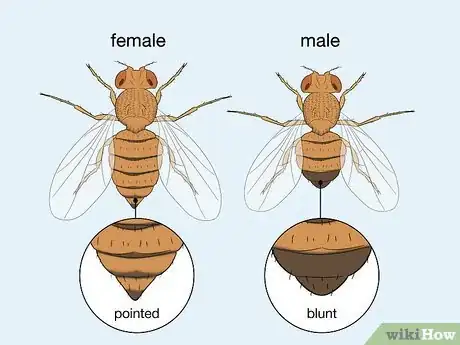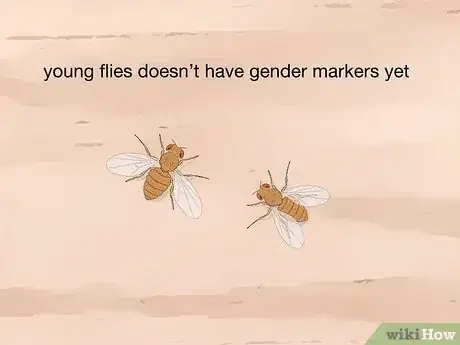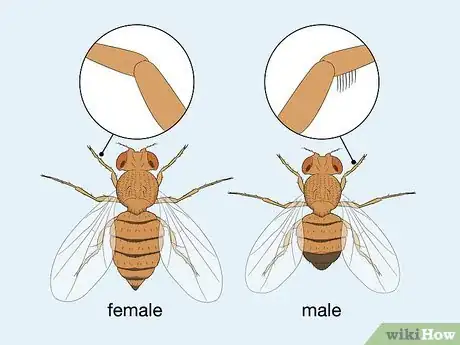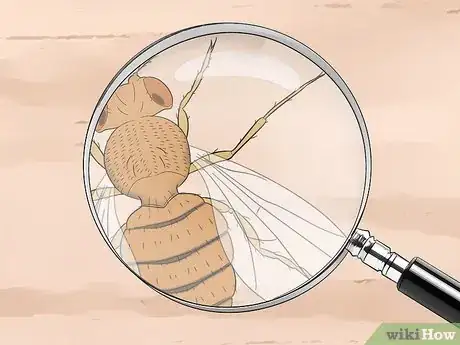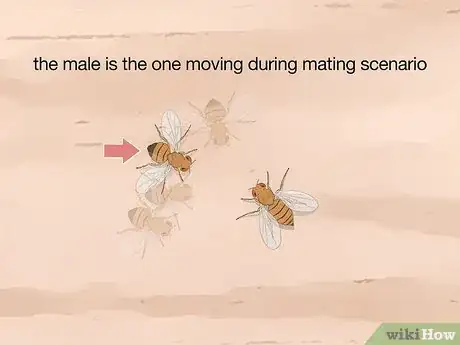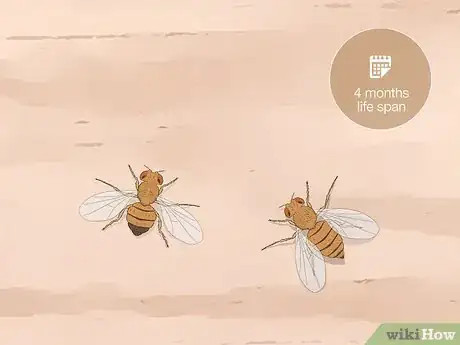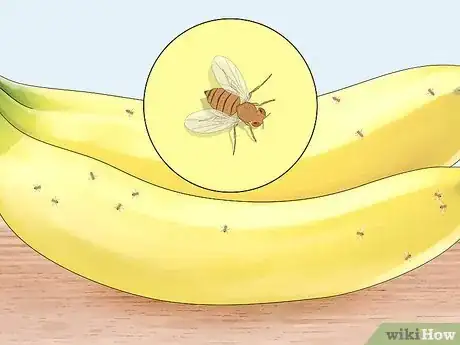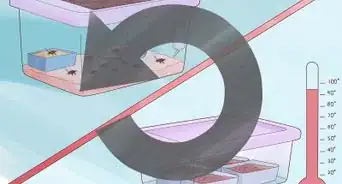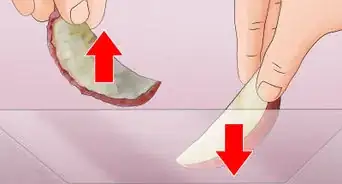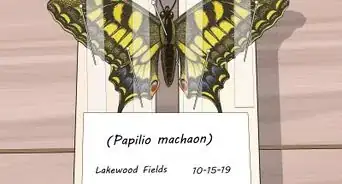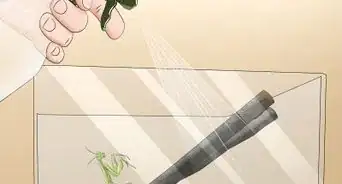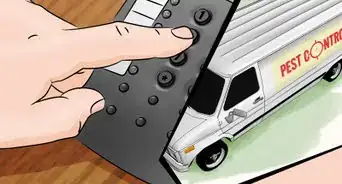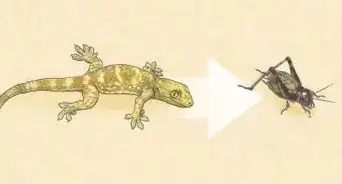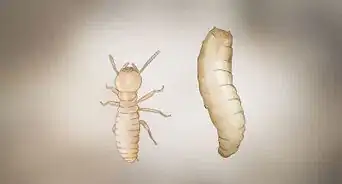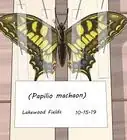This article was co-authored by Kevin Carrillo. Kevin Carrillo is a Pest Control Specialist and the Senior Project Manager for MMPC, a pest control service and certified Minority-owned Business Enterprise (MBE) based in the New York City area. MMPC is certified by the industry’s leading codes and practices, including the National Pest Management Association (NPMA), QualityPro, GreenPro, and The New York Pest Management Association (NYPMA). MMPC's work has been featured in CNN, NPR, and ABC News.
There are 8 references cited in this article, which can be found at the bottom of the page.
wikiHow marks an article as reader-approved once it receives enough positive feedback. In this case, several readers have written to tell us that this article was helpful to them, earning it our reader-approved status.
This article has been viewed 245,040 times.
Fruit flies, known scientifically as Drosophila melanogaster, are small flies usually found buzzing around ruined fruit.[1] Though they can be a nuisance out in the open, they are useful for science. They are sometimes used to study how genes are passed from generation to generation.[2] In order to observe this process, you need to be able to mate the flies. Mating is only possible if you can tell the difference between a male and a female.
Steps
Viewing the Color and Body Shape
-
1Take stock of their usual color. Most fruit flies are a yellowish brown, or tan, color. The presence of stripes indicates a female. Males do have a few stripes, but these stripes meld together and become dark toward the back of the abdomen, giving then a darker color.[3]
- These stripes actually appear as black rings.
- Differences in patterns of color are what many researchers use to determine the difference between male and female fruit flies.[4]
- For both genders, their eyes are large and red. They have five eyes and antennae.
-
2Look at how long the fly is. The female fruit fly is longer than a male of the same species. Their abdomens are longer, but not any other body part.[5] This makes females appear a bit larger than their male counterparts. In other words, when comparing two flies, the smaller, shorter fly is male.[6]Advertisement
-
3Notice whether it’s pointed or blunt. The abdomen of the female fruit fly is not only longer than that of the male fruit fly. It is also pointed. The male fruit fly abdomen is short and blunt. Therefore, when you compare two fruit flies, try to figure out which abdomen is pointed, and which is blunt.[7]
Noticing the Legs
-
1Determine if the flies look different or not. The fact is that extremely young flies have not yet developed many of the physical differences that are gender markers for adult flies. If you're comparing two flies that look the same, and you cannot determine if their body shapes or coloring are different, you may need to look for other signs of gender.[8]
-
2Look for a bristle on the forelegs. Find the two legs on the front half of the flies' bodies. These are their forelegs. Now look for a bristle (also known as a sex comb). This group of tiny, dark hairs is only present on male fruit flies. If the forelegs have no bristle, it means you are holding a female.[9]
-
3Use special equipment. Fruit flies are very tiny. Their average length is about 1⁄8 inch (0.3 cm), or 3 mm. [10] In order to locate the tiny bristles on their legs, you will need to immobilize the fly. Then use very delicate equipment to magnify the legs and identify a sex comb.
- You may have to kill or freeze the fly to keep it still.
- Use a magnifying glass.
- Try placing the fly on white paper to make it easier to see its features.
Observing Characteristics of Fruit Flies
-
1Note how females choose mates. To further assist you in determining the sex of fruit flies, it's helpful to know how they behave in general. For example, it is useful to note their mating habits so you can identify a male fruit fly by the way he behaves in a mating scenario. Female fruit flies choose a mate within 15 minutes. They decide based on the way the male dances and brushes against the female’s body.[11]
- When one fly is still while the other hops around like it is dancing, this may be a mating ritual. The male is the one moving.
-
2Be aware of their lifespan. If you're studying fruit flies in a controlled environment in order to study gender differences, it's good to know how long they will live. Fruit flies only live for 1/3 of a year, or about four months. They are very sensitive to temperature. They can start reproducing within a week of being born, producing hundreds of eggs at one time.[12]
-
3Notice where they like to live. You can find fruit flies buzzing with a “buzz” sound around rotting fruit. They tend to lay their eggs in fruit that has just become ripe so that by the time the larvae hatch, the fruit is rotten enough to produce the juices the flies need to survive.[13]
- Their mouths are shaped for sucking up liquids, making rotten fruit the perfect nest.
- You may find more females around such fruit since they are the ones interested in laying eggs.
Expert Q&A
Did you know you can get expert answers for this article?
Unlock expert answers by supporting wikiHow
-
QuestionWhy are fruit flies so hard to get rid of?
 Kevin CarrilloKevin Carrillo is a Pest Control Specialist and the Senior Project Manager for MMPC, a pest control service and certified Minority-owned Business Enterprise (MBE) based in the New York City area. MMPC is certified by the industry’s leading codes and practices, including the National Pest Management Association (NPMA), QualityPro, GreenPro, and The New York Pest Management Association (NYPMA). MMPC's work has been featured in CNN, NPR, and ABC News.
Kevin CarrilloKevin Carrillo is a Pest Control Specialist and the Senior Project Manager for MMPC, a pest control service and certified Minority-owned Business Enterprise (MBE) based in the New York City area. MMPC is certified by the industry’s leading codes and practices, including the National Pest Management Association (NPMA), QualityPro, GreenPro, and The New York Pest Management Association (NYPMA). MMPC's work has been featured in CNN, NPR, and ABC News.
Pest Control Specialist They really aren't hard to exterminate on their own, but fruit flies tend to be reintroduced into environments where they're commonly found. Since fruit fly eggs are commonly found in fruit and vegetables, any area where you're regularly bringing food in is going to eventually end up with fruit flies. This is why it's so important to clean fruit after bringing it into your home!
They really aren't hard to exterminate on their own, but fruit flies tend to be reintroduced into environments where they're commonly found. Since fruit fly eggs are commonly found in fruit and vegetables, any area where you're regularly bringing food in is going to eventually end up with fruit flies. This is why it's so important to clean fruit after bringing it into your home!
Warnings
- Either freeze or kill the flies by pinning them down before beginning to study them. Otherwise they will move quickly out of your grasp.⧼thumbs_response⧽
- Remember that flies are known for contaminating surfaces with bacteria. Wear gloves when handling them.⧼thumbs_response⧽
References
- ↑ http://www.ceolas.org/fly/intro.html
- ↑ http://www.hhmi.org/news/male-or-female-flies-some-cells-can-t-tell
- ↑ http://eol.org/pages/733739/details
- ↑ http://www.hhmi.org/news/male-or-female-flies-some-cells-can-t-tell
- ↑ http://www.phschool.com/science/biology_place/labbench/lab7/design.html
- ↑ http://eol.org/pages/733739/details
- ↑ http://www.phschool.com/science/biology_place/labbench/lab7/design.html
- ↑ http://www.phschool.com/science/biology_place/labbench/lab7/design.html
- ↑ http://www.phschool.com/science/biology_place/labbench/lab7/design.html
About This Article
To distinguish between male and female fruit flies, look at the fly to see if it has stripes, which is a sign that it's a female. If you can compare 2 flies, note that the larger fly will be female as they have longer abdomens. You should also loo out for a pointed abdomen on a female fly and a blunt abdomen on a male fly. Additionally, look for bristles on the fly's forelegs, which is a sign it's a male. Alternatively, watch out for males hopping when they prepare to mate, and females standing still. For tips on how to distinguish the gender of fruit flies based on their life span, keep reading!

